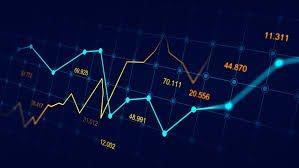The Future of Auto Forex Trading How Automated Systems Are Revolutionizing Currency Trading

In recent years, auto forex trading has gained immense popularity among traders looking for efficient and effective ways to enter the currency markets. Trading currency pairs manually can be time-consuming, requiring traders to constantly monitor charts and indicators. In response to this need for efficiency, auto forex trading solutions have emerged, allowing traders to automate their trading strategies. auto forex trading https://fxtrading-broker.com/ This article will explore the fundamental aspects of auto forex trading, its advantages, challenges, and its future in the financial landscape.
What is Auto Forex Trading?
Auto forex trading, often referred to as automated trading or algorithmic trading, involves using computer programs or algorithms to execute trades automatically. These systems analyze market conditions and execute trades based on pre-set criteria, removing the emotional component that can lead to poor decision-making. Traders set specific parameters such as entry and exit points, risk management strategies, and trade volumes, allowing the automated system to handle the execution in real-time.
The Evolution of Forex Trading
Forex trading has evolved significantly over the past few decades. From the introduction of electronic trading platforms in the late 1990s to the rise of algorithmic trading in the 2000s, traders have always sought ways to enhance their trading capabilities. The advent of technology has made it easier for retail traders to access the forex market, once dominated by institutional traders and banks.
The Advantages of Auto Forex Trading
1. Efficiency and Speed
One of the most significant advantages of auto forex trading is the speed at which trades can be executed. Automated systems can analyze market data and execute trades within milliseconds. This speed is crucial in the fast-paced forex market, where prices can fluctuate rapidly. Traders using automated systems can capitalize on trading opportunities that would be missed if relying on manual execution.
2. Elimination of Emotional Trading
Emotions often cloud judgment and can lead to irrational trading decisions. Auto forex trading helps remove the emotional aspect of trading, allowing traders to stick to their strategies without being influenced by fear or greed. This adherence to a predetermined strategy can lead to more consistent performance over time.
3. 24/7 Market Access
The forex market operates 24 hours a day, five days a week. Automated trading systems can monitor the market continuously, allowing trades to be executed even when the trader is not actively watching the charts. This accessibility enables traders to take advantage of market movements that occur outside of their regular trading hours.
4. Backtesting and Strategy Optimization
Automated trading systems can be backtested using historical data to evaluate the effectiveness of trading strategies. Traders can fine-tune their strategies based on past performance, which can increase confidence when deploying them in live trading scenarios. This analytical approach allows traders to refine their methods and achieve better results.
Challenges of Auto Forex Trading
1. Technical Failures
While automated trading offers many benefits, it also comes with its own set of challenges. Technical failures, such as connectivity issues, software glitches, or server downtimes, can hinder a trader's ability to execute trades effectively. Traders must ensure they have reliable infrastructure and risk mitigation strategies in place to cope with potential technical problems.
2. Over-Optimization

Traders may fall into the trap of over-optimizing their trading strategies based on historical data. Over-optimization can lead to curve-fitting, where a strategy performs exceptionally well on past data but fails in live trading conditions. Traders must strike a balance between optimizing their strategies while ensuring they remain robust and adaptable to changing market conditions.
3. Market Volatility
The forex market is known for its high volatility. Rapid price changes can lead to slippage, where trades are executed at prices different from the intended levels. Automated systems may not always account for sudden market shifts, leading to potential losses. It is essential for traders to implement stop-loss and take-profit orders within their automated strategies to manage this risk.
4. Dependence on Technology
Auto forex trading requires a high level of dependence on technology. Traders must be comfortable with using trading platforms, coding algorithms, and understanding market analytics. If a trader lacks technical skills, they may struggle to set up or maintain their automated systems effectively.
How to Get Started with Auto Forex Trading
1. Choose a Reliable Trading Platform
The first step in getting started with auto forex trading is to select a trustworthy trading platform that supports automated trading. Look for platforms that offer user-friendly interfaces, reliable execution speeds, and advanced trading tools. Different platforms have varying features, so choosing one that aligns with your trading goals is crucial.
2. Develop Your Trading Strategy
Your success in auto forex trading largely depends on the effectiveness of your trading strategy. Develop a robust strategy that considers your risk tolerance, trading goals, and market conditions. Consider factors such as technical indicators, chart patterns, and market correlation when developing your approach.
3. Test and Optimize Your Strategy
Before deploying your strategy in live trading, it's essential to backtest it using historical data. Analyze the results to identify strengths and weaknesses. Optimize the strategy as needed, striking a balance between performance and adaptability. Ensure your strategy can handle different market conditions.
4. Monitor Your Automated System
Even with automated trading, regular monitoring is crucial. Keep an eye on system performance, market changes, and any potential technical issues. Adjust your strategy as necessary based on your observations and the changing landscape of the forex market.
The Future of Auto Forex Trading
As technology continues to advance, the future of auto forex trading looks promising. Machine learning and artificial intelligence are emerging trends that could further enhance automated trading systems. These technologies can analyze vast amounts of market data, identify patterns, and adapt strategies in real-time, leading to even more efficient trading.
In addition, regulatory developments will shape the auto forex trading landscape. Regulatory bodies are increasingly focused on ensuring fair practices in automated trading, leading to the development of industry standards that can foster greater transparency and security.
Conclusion
Auto forex trading is an innovative approach that is transforming the way traders engage with the currency markets. By leveraging automated systems, traders can experience increased efficiency, minimize emotional decisions, and have continuous market access. However, it is critical to recognize the challenges associated with automated trading and prepare accordingly. By understanding both the advantages and challenges, traders can set themselves up for success in this dynamic field. As technology continues to evolve, the potential for auto forex trading is limitless, making it an exciting area for traders to explore.
